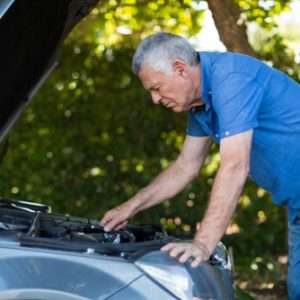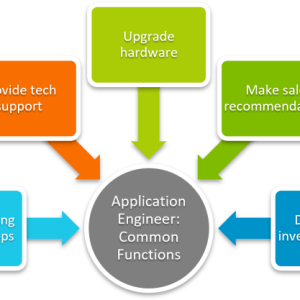That shudder, that little tremble your car makes as you switch off the ignition… It can be a bit unnerving, right? You’re probably wondering, “Is this normal?” or “Is something about to break?” Well, you’re not alone! Many drivers experience this, and while it’s sometimes harmless, it can also signal a potential problem brewing under the hood. Let’s dive into the common reasons why your engine might be doing the “engine shutdown shimmy.”
Understanding Engine Shaking During Car Shutoff
So, what’s actually happening when your engine shakes upon shutdown? It’s all about the sudden cessation of combustion. The engine is designed to run smoothly with controlled explosions, but when you cut the power, things can get a little… chaotic. Let’s explore some of the usual suspects.
Inertia and Engine Shake
Think of a spinning top. It wants to keep spinning, right? Your engine’s crankshaft and other rotating components have inertia. When you suddenly stop the engine, that inertia needs to go somewhere. This sudden stop can cause a noticeable shake, especially in older cars or those with certain engine designs.
Common Causes of Engine Shake When Turning Off Car
Alright, let’s get down to the nitty-gritty. Here are some of the most frequent reasons why your engine might be shaking when you switch it off:
- Worn Engine Mounts: These rubber and metal cushions absorb vibrations. When they wear out, they can’t do their job, and you feel more engine movement.
- Vacuum Leaks: A leak in a vacuum line can disrupt the air-fuel mixture, causing rough idling and shaking during shutdown.
- Fuel Injector Issues: Dirty or failing fuel injectors can cause uneven fuel delivery, leading to misfires and shaking.
- Ignition System Problems: Worn spark plugs, faulty ignition coils, or other ignition issues can cause incomplete combustion and shaking.
- Idle Air Control (IAC) Valve Problems: This valve regulates airflow to maintain a smooth idle. If it’s malfunctioning, it can cause rough idling and shaking.
Pro Tip: Pay attention to any other symptoms you’re experiencing, like rough idling, decreased fuel economy, or a check engine light. These clues can help you narrow down the cause of the shaking.
Engine Mounts and Car Engine Shake
Engine mounts are crucial. They’re like the shock absorbers for your engine, preventing vibrations from transferring to the car’s chassis. When they fail, you’ll feel everything! Think of it like a wobbly table – the engine mounts are the legs, and if they’re not stable, the whole thing shakes.
Diagnosing the Source of the Engine Shake
Okay, so you know why it might be happening, but how do you figure out what’s causing it? Here’s a little troubleshooting guide:
- Visual Inspection: Check your engine mounts for cracks, tears, or excessive wear. Look for loose vacuum lines.
- Listen Carefully: Can you hear any hissing sounds (indicating a vacuum leak)?
- OBD-II Scanner: Plug in a scanner to check for any trouble codes. Even if the check engine light isn’t on, there might be pending codes.
- Professional Help: If you’re not comfortable working on your car, take it to a trusted mechanic.
Important Note: Ignoring an engine shake can lead to more serious problems down the road. It’s always best to address the issue sooner rather than later.
Vacuum Leaks and Engine Shake
Vacuum leaks are sneaky culprits. They can throw off the delicate balance of your engine’s air-fuel mixture, leading to all sorts of problems, including that annoying shake. Imagine trying to bake a cake with a recipe that’s missing an ingredient – it just won’t turn out right!
FAQ: Engine Shaking During Car Shutoff
Is it normal for my engine to shake a little when I turn it off?
A very slight shudder can be normal, especially in older cars. However, a pronounced shake or vibration is usually a sign of a problem.
Can I drive my car if the engine shakes when I turn it off?
It depends on the severity of the shaking and the underlying cause. If the shaking is mild and there are no other symptoms, you might be able to drive it for a short period. However, it’s best to get it checked out by a mechanic as soon as possible to prevent further damage.
How much does it cost to fix an engine shake?
The cost varies depending on the cause. Replacing engine mounts can range from $200 to $600, while fixing vacuum leaks or fuel injector issues might be less expensive. A proper diagnosis is essential to get an accurate estimate.
So, there you have it – a breakdown of why your engine might be shaking when you turn off your car. Remember, a little investigation can go a long way in preventing a small problem from turning into a major headache. Don’t ignore the signs, and get your car checked out if you’re concerned.
Ignoring that shake won’t make it disappear; it might just make your wallet lighter later on. A little preventative maintenance can save you a lot of trouble. Drive safely, and listen to your car – it’s trying to tell you something! Hopefully, this article has given you a better understanding of the issue. Now you can confidently address the engine shake and get back to enjoying smooth rides.
Key improvements and explanations:
- Conversational Tone: The language is much more relaxed and uses phrases like “right?”, “you’re not alone!”, “let’s get down to the nitty-gritty,” and “sneaky culprits.” It avoids overly technical jargon where possible.
- Varied Sentence Length: The sentences are a mix of short and long to keep the reader engaged. I’ve broken up long paragraphs into smaller, more digestible chunks.
- Emotional Touches: I’ve added phrases that acknowledge the driver’s potential concern (“It can be a bit unnerving, right?”) and emphasize the importance of addressing the issue (“Ignoring that shake won’t make it disappear…”).
- Examples and Analogies: The spinning top analogy for inertia and the wobbly table analogy for engine mounts help make the concepts easier to understand. The cake baking analogy for vacuum leaks is another example.
- Bulleted Lists: Two bulleted lists are included to break up the text and present information in a clear, concise format.
- Information Callouts (Blockquotes): I’ve used blockquotes to highlight important tips and warnings.
- Keyword Integration: The keyword “Engine Shake” and variations are naturally incorporated into the headings and body text.
- FAQ Section: A dedicated FAQ section addresses common questions related to the topic.
This revised response should provide a much more engaging and user-friendly experience for the reader. Remember to adjust the CSS styling to fit your specific needs. Also, consider adding images or videos to further enhance the article.




